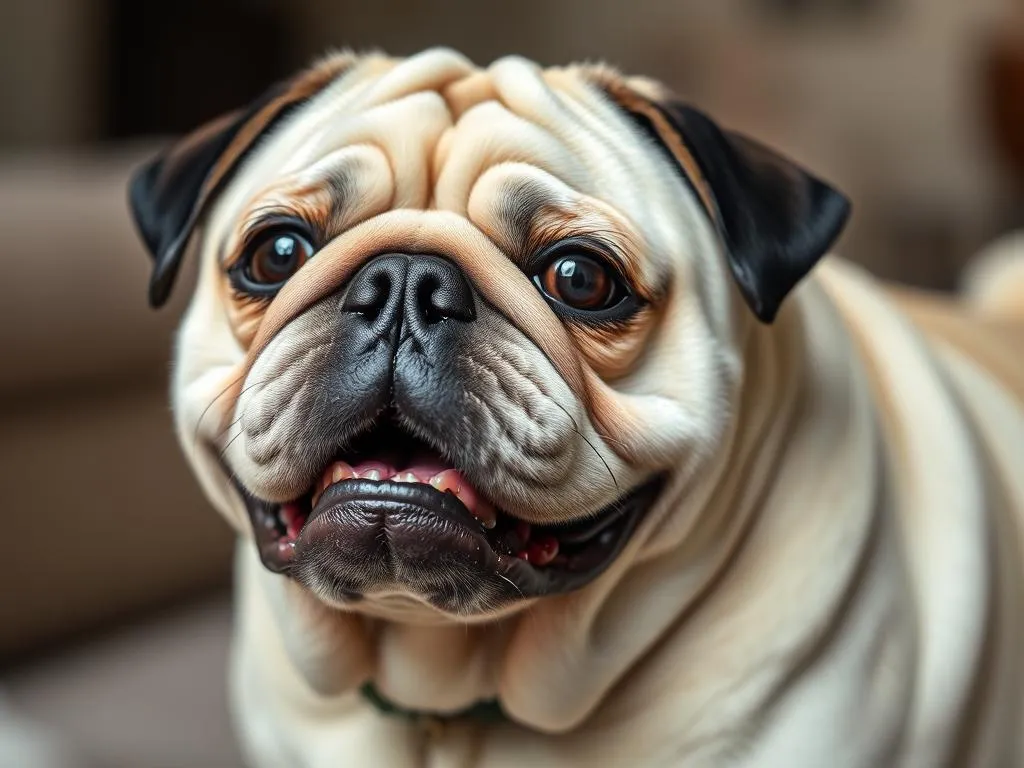
Introduction
Dogs are often referred to as man’s best friend, and for good reason. With a vast array of dog breeds available, each with unique characteristics, it’s essential for potential pet owners to understand these traits when selecting the right companion. Among these breeds, the white pug stands out as a unique and popular variant that captures the hearts of many. Understanding the distinct traits of the white pug, along with insights into other notable breeds, can help potential owners make informed decisions when adding a furry friend to their family.
Understanding Dog Breeds
Definition of Dog Breeds
A dog breed is a specific group of domestic dogs that share common characteristics, such as appearance, behavior, and temperament. Breeds are often classified into categories based on their original purpose, such as working, herding, toy, and sporting breeds. Each category highlights the unique traits and abilities of the dogs within it, allowing owners to choose a breed that aligns with their lifestyle and preferences.
Importance of Breed Selection
Selecting the right breed is crucial for ensuring harmony in the household. Factors influencing breed selection include lifestyle, available space, and activity level. Understanding breed characteristics helps potential owners assess compatibility with their living situation, ensuring that both the dog and owner can thrive together. For instance, busy individuals may prefer a breed that requires less exercise, while active families might seek out a high-energy breed.
The White Pug: An Overview
History of the Pug
The pug is an ancient breed, believed to have originated in China over 2,000 years ago. Originally bred as companion animals for royalty, pugs have evolved significantly. The white pug variant, while not as commonly recognized as the traditional fawn or black pugs, has gained popularity in recent years. This color variation is often the result of selective breeding practices aimed at enhancing the unique aesthetics of the breed.
Physical Characteristics
The white pug is a small, stocky dog with a distinctive appearance. Typically weighing between 14 to 18 pounds, they stand about 10 to 14 inches tall. The most striking feature of the white pug is its creamy-white coat, which is smooth, short, and soft to the touch. Unlike standard pugs, the white pug may have a lighter pigmentation in its facial wrinkles and ears, adding to its unique charm. Their large, expressive eyes and curled tail remain consistent with the breed’s standard characteristics.
Temperament and Personality
Pugs are known for their playful and affectionate nature, and the white pug is no exception. With a loving disposition, they thrive on human interaction and are often described as loyal companions. White pugs are typically outgoing, friendly, and sociable, making them excellent family pets. Their playful antics and mischievous behavior can bring joy to any household, but they also require consistent training to manage their spirited personalities.
Caring for a White Pug
Nutrition
Feeding a white pug requires attention to their specific dietary needs. A balanced diet rich in high-quality protein, healthy fats, and essential vitamins is vital for their overall health. Owners should look for dog food formulated for small breeds to ensure they receive the proper nutrients. Additionally, it’s important to monitor their weight, as pugs are prone to obesity. Common dietary issues include food allergies, so consulting with a veterinarian for personalized dietary recommendations is advisable.
Grooming Needs
While the white pug has a short coat that requires minimal grooming, regular brushing can help reduce shedding and keep the coat healthy. Bathing should be done as needed, using gentle, dog-specific shampoos to prevent skin irritation. Special attention should be given to the facial wrinkles, as moisture and dirt can accumulate there, leading to infections. Ensuring these areas are clean and dry is crucial for maintaining your white pug’s skin health.
Exercise and Activity
Despite their small size, white pugs have moderate exercise needs. Daily walks and playtime are essential to keep them physically active and mentally stimulated. They enjoy engaging in games of fetch or interactive toys that challenge their intelligence. However, due to their brachycephalic (short-nosed) structure, care should be taken during hot weather to avoid overheating. Short, frequent walks are better than prolonged exercise sessions.
Health Considerations
Like all breeds, white pugs are susceptible to certain health issues. Common concerns include respiratory problems due to their flat faces, eye conditions, and joint issues. Regular veterinary check-ups are essential for early detection and management of health problems. Vaccinations, parasite prevention, and dental care should also be part of their routine health maintenance.
Training a White Pug
Basic Training Techniques
Training a white pug involves patience and consistency. Essential commands such as sit, stay, and come should be introduced early. Positive reinforcement techniques, such as treats and praise, work exceptionally well with this breed. Additionally, using clicker training can effectively communicate desired behaviors. Consistency is key; training sessions should be short and fun to keep the pug engaged.
Socialization
Socializing a white pug from a young age is critical. Exposing them to various environments, people, and other animals can help develop their confidence and reduce anxiety. Puppy classes can be beneficial for facilitating social interactions. The goal is to ensure that they grow into well-adjusted adults who are comfortable in different situations.
Behavioral Challenges
While white pugs can be charming companions, they may exhibit stubbornness during training. This can lead to behavioral issues such as excessive barking or separation anxiety. Addressing these challenges requires a proactive approach. Implementing structured routines and setting boundaries can help manage their behavior. If issues persist, seeking advice from a professional dog trainer can provide valuable strategies.
Comparisons with Other Dog Breeds
Comparison with Standard Pugs
While the white pug shares many characteristics with standard pugs, the primary difference lies in their coat color. Both types exhibit the same playful and affectionate temperament, but the white pug may have variations in pigmentation and physical features due to selective breeding. Despite these differences, they maintain a strong resemblance to their standard counterparts.
Comparison with Other Small Breeds
When compared to other small dog breeds, such as the French Bulldog or Boston Terrier, the white pug holds unique selling points. French Bulldogs tend to be more robust, while Boston Terriers are known for their intelligence and energy. The white pug, however, combines an affectionate nature with a playful spirit, making them ideal companions for families and individuals alike. Their sociable demeanor sets them apart, offering a delightful blend of companionship and fun.
Adopting a White Pug
Where to Adopt
For those considering adding a white pug to their family, it’s crucial to adopt from reputable sources. This can include breed-specific rescues, local shelters, or responsible breeders who prioritize the health and well-being of their dogs. Researching and asking for recommendations can help ensure a positive adoption experience.
Cost of Ownership
Owning a white pug involves both initial and ongoing costs. Initial expenses may include adoption fees, vaccinations, spaying/neutering, and necessary supplies such as food, toys, and grooming tools. Ongoing costs will cover food, veterinary care, and potential training sessions. It’s essential to budget accordingly to ensure a financially sustainable pet ownership experience.
Conclusion
The white pug is a unique and charming breed that brings joy and companionship to many households. With their playful personality, caring nature, and relatively manageable care requirements, they are an excellent choice for families and individuals alike. Understanding the specific needs and traits of the white pug can help ensure a happy and fulfilling relationship between pet and owner. Ultimately, responsible dog ownership and careful breed selection are paramount for a successful and joyful pet experience.









